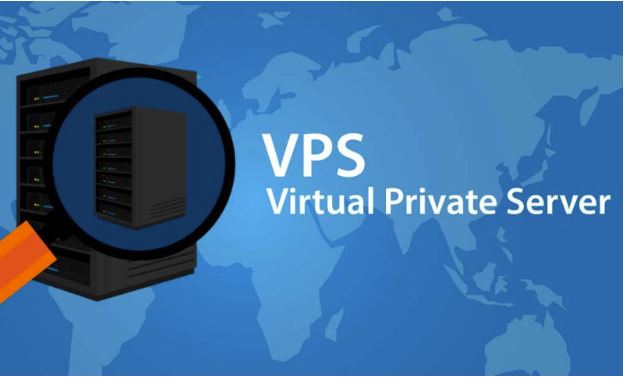Climate change is a big problem for our planet right now. The Earth is getting hotter, ice at the poles is melting, and we’re seeing more crazy weather happening. We really need to find ways to fix this, and fast. Luckily, AI is stepping up to help out. Let’s see how AI is being used to tackle different parts of this tough issue.
An AI ML Course can help you learn how to use technology to tackle climate change. With this certification, you’ll understand how to apply AI tools to analyze data, predict weather patterns, optimize renewable energy systems, and develop innovative solutions to combat environmental challenges.
This knowledge and skill set will enable you to contribute effectively to efforts aimed at addressing climate change and creating a more sustainable future.
Let’s continue reading.
Understanding The Impact Of Climate Change
The weather on Earth is changing a lot because of what people are doing, like burning fossil fuels, cutting down trees, and doing industry stuff. These things let out gases that make the air warm up, which we call the greenhouse effect.
These changes are affecting everyone around the world already. It’s getting warmer, which makes ice in places like the poles melt, and that raises the level of the sea, which is dangerous for places near the coast. Also, there are more extreme weather events like big storms, long dry periods, and really hot days, which hurt nature, farming, and people.
According to the Intergovernmental Panel on Climate Change (IPCC), without urgent action to reduce greenhouse gas emissions, global temperatures could rise by 1.5 to 2 degrees above pre-industrial levels by the end of the century, with catastrophic consequences for the planet.
Here are some recent data that present concerning trends regarding environmental changes:
- Global temperature increase: Over the past century and a quarter, there has been a discernible uptick in the Earth’s mean surface temperature, amounting to an approximate increment of 1.2 degrees Celsius.
- Ice melt observation: Studies indicate a notable decrease in Arctic sea ice, with a reduction rate of approximately 12.85% per decade. This phenomenon has adverse implications for various Arctic fauna, notably polar bears, and their habitats.
- Sea level elevation: Observational records demonstrate an elevation in global sea levels by around 8 inches throughout the last century. This rise poses significant threats to coastal regions, their populations, and the delicate ecosystems they harbor.
- Escalation in extreme weather events: There is a discernible increase in the frequency and severity of extreme meteorological occurrences, encompassing hurricanes, droughts, and wildfires, among others. These events bear substantial repercussions on human societies and natural environments alike.
How AI Can Make A Difference
AI includes different technologies that copy how people think to study data, recognize patterns, and make decisions. Using AI for climate change can bring new ideas in areas like energy, transportation, farming, and watching the environment.
Here’s how AI can make a difference:
1. Predictive Analytics
AI programs can look at lots of information to guess what the weather might do and determine what might happen more accurately. They do this by studying past weather records, pictures from satellites, and other things like that. This helps predict things like storms so people can prepare and try to stop bad things from happening.
2. Renewable Energy Optimization
Switching to cleaner energy like solar, wind, and water power is really important to reduce pollution and fight climate change. AI helps a lot in making these types of energy work better and more reliably.
For example, AI algorithms can analyze weather patterns and energy demand to optimize the operation of solar and wind farms, ensuring maximum energy production while minimizing costs and environmental impacts. Additionally, AI-powered predictive maintenance can help prevent downtime and extend the lifespan of renewable energy infrastructure.
3. Climate Modeling And Prediction
AI can help fight climate change by figuring out the weather. For instance, smart computer programs can look at tons of information from satellites, weather stations, and buoys in the ocean. They use this data to guess what the weather might be like in the future.
With these programs, scientists can learn more about why the environment is changing and what might happen next. By using AI to guess what might happen based on past records like temperature changes, rain patterns, sea levels rising, and crazy weather events, people who make decisions can plan better to stop bad things from happening.
4. Precision Agriculture
AI-powered agriculture technologies enable farmers to optimize resource usage, minimize environmental impact, and increase crop yields. AI systems can recommend precise planting schedules, optimal irrigation techniques, and personalized fertilizer applications by analyzing soil data, weather patterns, and crop characteristics. This enhances agricultural productivity and reduces water consumption, pesticide use, and greenhouse gas emissions associated with traditional farming practices.
5. Environmental Monitoring
AI-based monitoring systems can track environmental indicators, such as air quality, deforestation rates, and wildlife populations, in real-time. By analyzing satellite imagery, sensor data, and social media feeds, these systems can detect environmental threats, illegal activities, and ecosystem changes, allowing authorities to take timely action to protect biodiversity and natural habitats.
6. Climate Adaptation And Resilience
AI can also help improve adjustment and resilience to climate change. As the impacts of climate change become more severe, communities must be prepared for and respond to events such as floods, droughts, and heat waves.
Tools powered by AI can contribute to better early warning systems for extreme weather conditions, which can enable authorities to evacuate people at risk and allocate resources more efficiently. Furthermore, there are AI-supported tools for assessing risks and planning, which will help in identifying vulnerable areas and developing adaptation strategies for changing environmental situations.
7. Energy Efficiency And Conservation
Improving energy efficiency is another vital element of the climate change fight, as it lowers the demand for fossil fuels and the amount of carbon emitted. In such a case, AI technologies would be capable of assisting in uncovering possibilities to save energy for buildings, transportation, and other sectors.
An AI system analyzing data about energy consumption, equipment operation data, and environmental surroundings can detect inefficiencies and propose options to reduce energy consumption and waste. These solutions may comprise installing more efficient appliances, screening HVAC systems, or implementing smart heating and lighting solutions.
Real-World Applications Of AI To Combat Climate Change
Using AI to help fight climate change is already making a big difference in many areas:
- Capturing Carbon: AI helps industries capture and store carbon dioxide underground, which helps reduce emissions.
- Smart Energy Systems: AI makes energy distribution smarter by balancing how much energy is produced and used. It also helps use more renewable energy and reduces energy lost during transmission.
- Money for Climate Projects: AI tools help investors find good ways to invest their money in projects that help the environment. They can also see how their investments affect the climate.
- Helping in Emergencies: AI-powered drones and robots help out during disasters by finding people, checking how bad things are, and bringing help to places that need it.
The Way Forward
While AI holds immense potential in the fight against climate change, its effectiveness depends on collaboration among governments, businesses, researchers, and civil society.
Key priorities for leveraging AI include:
- Data accessibility: Promoting open access to environmental data and supporting data-sharing efforts to drive AI research and development.
- Ethical considerations: Addressing concerns around AI ethics, such as data privacy, algorithmic bias, and possible side effects of the technology, will foster trust and responsibility in artificial intelligence-operated systems.
- Capacity building: Investing in education, training, and skills development to help enable people and organizations to use AI capabilities for climate purposes.
- Policy support: Develop policies and regulations that encourage AI technologies, boost and facilitate innovation, and ensure international collaboration on climate issues.
Conclusion
Climate change is a big problem we face today. We need to act fast worldwide, in our countries, and even in our communities. AI can help us a lot. It gives us tools and technology that can help us understand climate change better. With AI, we can predict and lessen its effects. It can also help us move towards a future that’s more sustainable and able to bounce back from challenges.
Using AI, we can work on the reasons behind climate change. This helps us protect the health and happiness of people now and in the future.
Read Also:

























